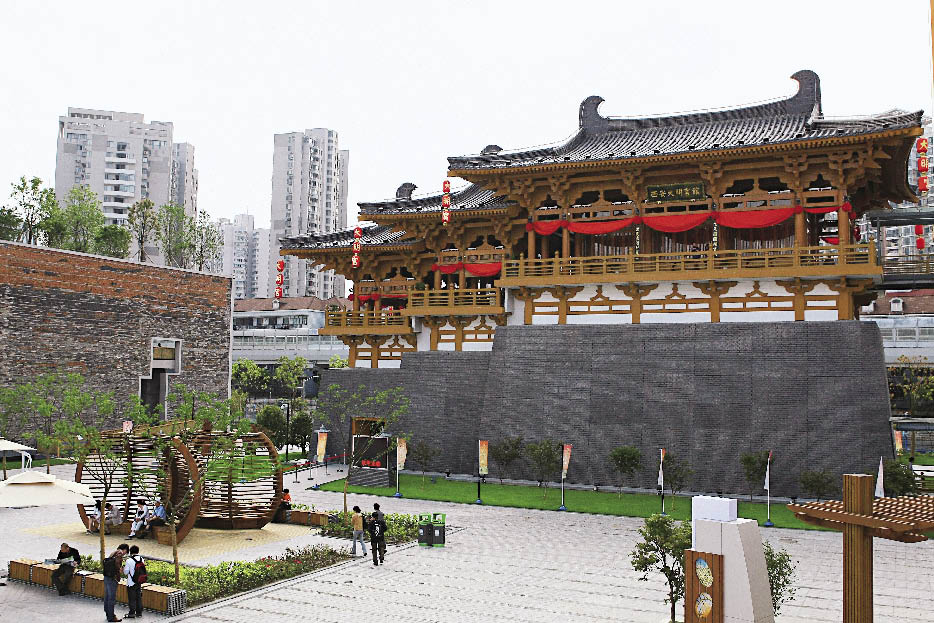| Daming Palace Rises Again in Xi’an
By staff reporter ZHANG XUEYING
THE Daming Palace Ruins Region will open to the public on October 1, 2010 when renovations are completed. It is expected to brighten that quarter of the city for local inhabitants, and become a spectacle unique to this ancient yet modern city. Preservation of the Daming Palace Ruins has been listed as one of UBPA (Urban Best Practices Area) at the 2010 Shanghai World Expo. “The project exemplifies a new way of thinking, prompting us to reconsider the strategic development of major ruins regions,” Giora Solar, a member of the International Council on Monuments and Sites (ICOMOS), affirms, citing the role of the project as a fresh and new direction, commenting, “The Da-ming Palace preservation project is hoped to become an international model for the preservation of cultural heritage.”
 |
|
“Many people have realized that historical splendor can stimulate cultural renaissance in commercial development, and reshape the city’s culture. This is a new industrial model. Historical value increases through cultural renaissance.” |
And it won’t end with Daming. Shan Jixiang, chief of the State Administration of Cultural Heritage, remarks: “Preservation of major ruins is a key but difficult process in the protection of cultural heritage. One third of regions under national protection feature major ruins. There are a great number slated for restoration and they occupy vast areas; the sites are often buried in different strata as well. Following the acceleration of urbanization, the clash between the drive to preserve them and reserving land for urban/rural economic development is intensifying, but the Daming case, we hope, will lead the way.”
Construction and Compromise
The case of Daming Palace is particularly sensitive. Xi’an, the capital of Shaanxi Province, was once the capital of China and known as Chang’an during the Tang Dynasty (618-907). The city was the starting point of the Old Silk Road and the first city in the world whose population exceeded one million. Built in the seventh century, Daming was the best known imperial palace in the Tang Dynasty, and of the 21 Tang emperors, 17 lived and ruled from its splendor. It was called the “zenith of China’s palace complexes.”
The Daming Palace Ruins Region, covering 3.2 square kilometers, is 4.5 times the area of Beijing’s Forbidden City and 8 times the area of the Louvre. It was put under national protection in 1961 which effectively banned large-scale construction there. Since the ruins are buried underground, no water discharge facilities and pipelines are allowed. “In rainy seasons it is water-logged. Sewage cannot be discharged, and tap water cannot be installed into homes. In summer, the area simply stinks. Even though it is in an urban area, its environment is far inferior to rural townships,” explains Ge Chao, deputy director of the Planning and Promotion Bureau of the Xi’an Qujiang Daming Palace Ruins Region Preservation and Reconstruction Office.
|
